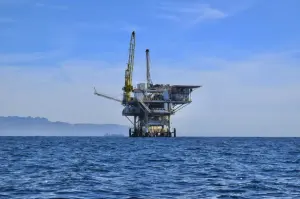 Add My Company
Add My Company

There are many materials out there made for particular purposes. Stainless steel is no exception, so much so that there are several variants. These include food-grade and marine-grade, both used in tubing. What we are going to do is discuss the differences between these specific grades. Once you know them, you will be able to buy the correct tubes for your projects. In addition, you can come to us for things like tube reduction.
Key factors
Firstly, marine-grade is more durable and stronger. It is an alloy, featuring molybdenum as well as other elements like chromium. This steel has good corrosion resistance and typically won’t develop surface patina. It is normally utilised on external furniture, table legs, boats, and industrial equipment for marine settings.
Food-grade steel is similar in terms of being an alloy, featuring other elements like chromium. They work to enhance specific characteristics such as heat resistance. Marine-grade steel can withstand saltwater and corrosion damage. Food-grade can’t endure the same conditions. It generally doesn’t need to though as it only needs to resist food acids.
Another fact is that marine-grade is the more expensive of the two. There is a higher chromium content here. This is responsible for the superior corrosion protection, but means higher costs.
In terms of thickness, marine-grade stands tall again. If you need tube reduction for your project, come to us.
Advantages
Next, we’ll discuss the advantages of these two steels. Marine-grade is more resistant to abrasion and saltwater. It doesn’t work too well for food preparation since it is very reactive with acidic foods.
Food-grade is a more versatile type of stainless steel. It can resist high temperatures and scratches, but often can’t handle corrosion from salts or acids. It works for all kinds of cookware and more.
As for marine-grade, it is normally thicker compared to other kinds of stainless steel. It can withstand moisture and saltwater whilst remaining strong. Food-grade stainless steel has a higher surface hardness. It typically doesn’t contain nickel either to minimise allergies.
Disadvantages
Then there are the disadvantages. Stainless steel is a substance that has use in everything from jewellery to cookware. Yet, there are drawbacks. Marine-grade costs more and isn’t as durable as standard stainless steel. Food-grade may also have some durability problems, and long term contact with salt can damage it.
With all this information, you should be able to make more informed choices between the two steels in future. It is always best to look closely at which grade you will use.
WORK WITH US FOR TUBE REDUCTION AND MORE
At Multiform Tubes Engineering Ltd, we work with food-grade and marine-grade stainless steel tube and many other materials. This allows us to meet the diverse needs of each client. As experts in our field, we strive to achieve the highest standards in every project.
So, if you need tube reduction or another one of our services, please let us know. We’d be happy to offer it, ensuring you get the best results.
For more information on HOW DO MARINE-GRADE AND FOOD-GRADE STEELS DIFFER? talk to Multiform Tubes Engineering Ltd

